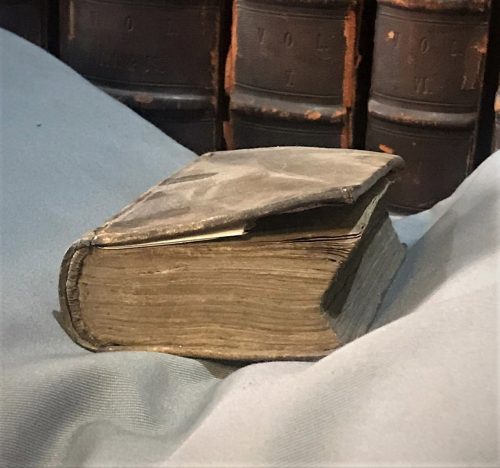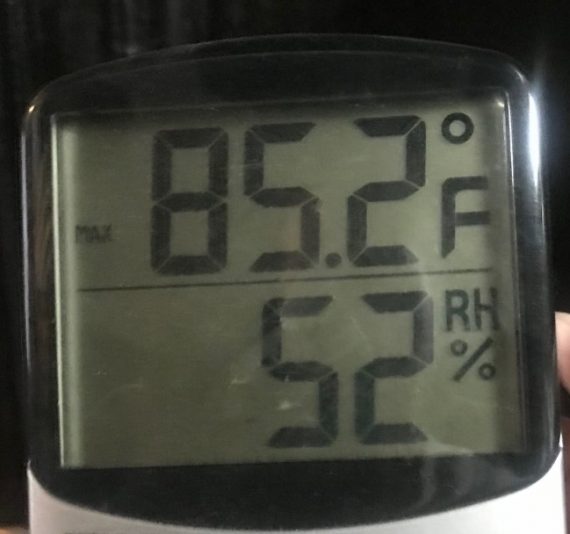- About
- Visiting
- What’s On
- Venue hire
- Catalogues
- Collections
- 101 Treasures of Chetham’s
- Digital Resources
- The Flowers of Histories
- A Book of Hours from France
- The Manchester Scrapbook
- Thomas Barritt of Manchester
- Art Treasures Examiner of 1857
- Manchester Association for Constitutional Order
- The North Western Museum of Science and Industry: Some Reminiscences by Richard Hills
- Criminal Manchester
- The Cup of Destiny
- Athenaeum Souvenir
- Middle English Manuscripts
- Manchester and Liverpool of Today
- Hollingworth’s Mancuniensis
- Memoir of Cecil Wray
- William Seward’s Diary
- The Anti-Monopolist
- Fishwick’s History of Rochdale
- Knyvett’s Defence of this Realm
- Tractatus de Nigromantia
- Axon Ballads
- Printed Books & Ephemera
- Archives & Manuscripts
- Prints and Photographs
- Blog
- Support us
Environmental Control

Environmental conditions play an important role in the life span of collections, if ignored the problems they cause can build up over time and cause a lot of damage to books and paper. This can lead to the need for expensive conservation repairs or worse irreversible damage. Monitoring the environmental conditions in a library or archive is crucial for creating the best plan for the preservation of collections.
The conditions that are recorded will provide proof of good collections and conservation management for funders and professional bodies. This means that the standards and guidelines that are the requirements of government agencies and funding bodies are additional reasons to implement a solid programme of environmental management, as well as the preservation of the collections. Gathering and acting on data can take a long time, but strong environmental records will mean that evidence of good conservation of collections can be to hand if it is needed as a condition of a grant, or as evidence of need to support applications to fund improvements.
As environmental conditions are such a broad topic this blog will be focusing on temperature and Relative Humidity. These two areas can have a huge impact on the condition of library and archive collections. It is important to remember that the buildings that house them and the documents they contain, are whole ecosystems and that environmental factors are often a direct result of the building.
The definition of RH is the moisture content in the air, this content is measured as a percentage. The aim of environmental control for RH is to keep the moisture content of objects as constant as possible. An ideal RH level for collections is between 40% and 65% as recognised by U.K. heritage organisations. Temperature can have a significant impact on RH, therefore its control can be useful in maintaining RH levels. For example, RH levels increase with a lower temperature and decrease with a higher one. Either extreme causes problems as a high RH encourages mould and pests, whilst a low RH will lead to excessive dryness and cracking of organic materials.

Above: an example of our RH reader
The correct conservation equipment needs to be in place to effectively monitor temperature and RH levels. Equipment and methods vary across different institutions. Here at Chetham’s we monitor our RH and temperature with the Tiny Tag software. The Tiny Tag device provides up to date readings which alerts conservation staff to any drastic change in environment levels. If a negative change has occurred there are ways to bring the RH down or up to an acceptable level.
Some simple preventative methods include air conditioning, dehumidification, humidification, and conservation heating. Some control methods are more expensive and less energy-efficient than others. For example, dehumidification uses one-third of the energy of heating for the same RH control. We use a combination of heating, humidification, and dehumidification to keep our RH levels within the recommended 40% to 65%. Our conservation heating is controlled to never go above a certain level as it could cause irreparable damage to priceless paperwork, books, and furniture.
Below: an example of our conservation heating

Your generous support is helping us to fund conservation work like this throughout this pandemic while our visitor tour income is reduced. Thank you to every single person who has donated to our Covid-19 Appeal so far.
By Laura Bryer
